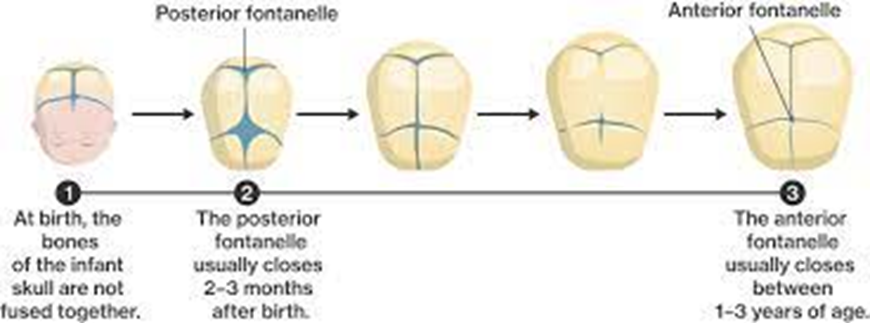To enhance the effectiveness of the pharmacological pain intervention administered to a 4-year old child with an injured knee, the nurse plans to add a nonpharmacological intervention. Which of the following actions would be appropriate for the nurse to perform? (select all that apply)
Perform passive range of motion on the injured knee.
Put an ice pack on the child's knee.
Have the child watch a favorite program on television.
Read a book to the child.
Correct Answer : B,C,D
A. Perform passive range of motion on the injured knee.
While passive range of motion exercises can be beneficial in some situations, it's important to exercise caution, especially with an injured knee. Without detailed information about the nature and extent of the injury, manipulating the injured area could potentially worsen the pain or cause harm. It is advisable to consult with the healthcare provider before implementing passive range of motion exercises.
B. Put an ice pack on the child's knee.
Applying an ice pack is a nonpharmacological intervention that can help reduce inflammation and provide pain relief for certain types of injuries. It is commonly used in the management of acute injuries to minimize swelling and alleviate discomfort.
C. Have the child watch a favorite program on television.
Distraction is an effective nonpharmacological approach to pain management, especially in children. Allowing the child to engage in a favorite activity, such as watching a program on television, can divert their attention from the pain and contribute to their overall well-being.
D. Read a book to the child.
Reading a book is a comforting and distracting activity. It creates a positive and calming environment, and it can help shift the child's focus away from the pain. This nonpharmacological intervention promotes a sense of comfort and reassurance.
Nursing Test Bank
Naxlex Comprehensive Predictor Exams
Related Questions
Correct Answer is B
Explanation
A. An abnormal finding-indicates the need for developmental assessment.
This is not accurate. The closure of the anterior fontanel within the expected age range does not indicate an abnormal finding or the need for additional developmental assessment.
B. A normal finding.
This is the correct interpretation. The anterior fontanel normally closes between 12 to 18 months, and closure by 19 months is within the expected developmental range.
C. An abnormal finding-indicates the need for immediate referral to a practitioner.
This is not necessary based on the information provided. The closure of the anterior fontanel within the expected timeframe is a normal finding.
D. A questionable finding-the infant should be rechecked in 1 month.
There's no need for rechecking in 1 month. The closure of the anterior fontanel at 19 months is considered normal.

Correct Answer is B
Explanation
A. Parents are shocked when their child is diagnosed with a malignant bone tumor. The orthopedic surgeon discusses the options of limb amputation and a limb-salvage procedure. The parents are asked to consider each option.
This situation involves a difficult medical decision, but it does not describe a conflict or ethical dilemma that necessitates immediate involvement of the ethics committee. The parents are being informed about treatment options, and their input is sought in making a decision for their child's care.
B. The physician recommends that a young child be taken off the ventilator. The parents, who are divorced and have joint custody of the child, have differing views about whether to discontinue the ventilator.
This scenario presents a clear ethical dilemma involving the withdrawal of life-sustaining treatment. The differing views of the divorced parents with joint custody may require the involvement of the hospital ethics committee to provide guidance and facilitate resolution.
C. A child in end-stage renal failure is placed on the renal transplant list. The parents are asked to sign permission for surgery after a cadaver kidney is located. One parent is out of town and gives telephone consent.
While organ transplantation involves ethical considerations, the described situation does not present an immediate conflict or dilemma that requires the ethics committee's urgent involvement. The scenario seems to involve a common process of obtaining consent for surgery.
D. After initial therapies have failed, a child with leukemia is evaluated for a new cancer protocol. The child, age 8 years, gives assent for the new treatment, and his parents give their consent.
This scenario involves a child participating in the decision-making process through assent, and the parents providing consent. While significant, it does not describe a conflict or ethical dilemma that requires immediate ethics committee involvement. The situation seems to involve standard procedures for obtaining informed assent and consent for medical treatment.
Whether you are a student looking to ace your exams or a practicing nurse seeking to enhance your expertise , our nursing education contents will empower you with the confidence and competence to make a difference in the lives of patients and become a respected leader in the healthcare field.
Visit Naxlex, invest in your future and unlock endless possibilities with our unparalleled nursing education contents today
Report Wrong Answer on the Current Question
Do you disagree with the answer? If yes, what is your expected answer? Explain.
Kindly be descriptive with the issue you are facing.
